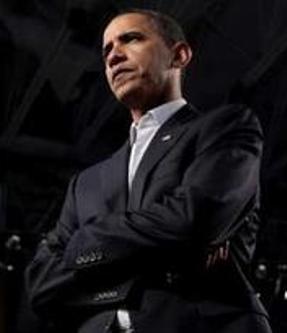
The Defense of Marriage Act (DOMA) defining marriage as one man and one woman for the purposes of federal law passed Congress with an overwhelming bipartisan majority and was signed into law by President Bill Clinton in 1996. It is the subject of a court challenge that the Supreme Court will hear on March 27. Last Friday, the Obama Justice Department filed a brief with the high court stating the Administration’s position that DOMA is unconstitutional.
Normally, it is the Justice Department’s job to enforce the nation’s laws. But as Heritage’s Hans von Spakovsky has noted, Obama’s Administration is different:
But now we have a Justice Department so politicized that it is actually arguing against federal statutes in court, and doing so not based upon the dictates of the law…but based on the apparent policy preferences and political ideology of this administration. So much for taking care that the laws be faithfully executed.
The Supreme Court will also hear arguments against Proposition 8, California’s state constitutional amendment defining marriage as one man and one woman, which was passed by popular vote of the citizens of that state. The March 26 arguments will come the day before the DOMA arguments. Several organizations, led by the National Organization for Marriage, are holding a March for Marriage in Washington, D.C., on March 26.
John C. Eastman, a law professor and former Dean at Chapman University School of Law, wrote a Heritage Legal Memorandum detailing the constitutional issues in these cases. He explains that the marriage challenges “implicate two bedrock constitutional concepts. First is whether the laws at issue prohibit the exercise of the fundamental right to marry in violation of the Due Process Clause. Second is whether they treat some people differently because of their sexual orientation in violation of the Equal Protection Clause.”
Eastman argues that the Constitution does not give an answer on marriage, and that:
The ultimate question before the Court, then, is whether the decision to embark on such an experiment is to be made by the people, either through their legislatures or directly by voter initiative, or whether the Constitution, which is silent on this precise question, must be interpreted to have already answered the question.
There has been a robust debate on this question for years. Citizens in 41 states have said over and over that marriage is between a man and a woman. The Supreme Court should allow the debate about marriage to continue and should let the people—not the courts—decide marriage policy.
Marriage exists to bring a man and a woman together as husband and wife to be father and mother to any children their union produces. Marriage policy is about much more than emotional intensity. The government isn’t in the business of affirming our loves. It leaves consenting adults free to live and love as they choose, as Heritage’s Ryan Anderson has written:
Contrary to what some say, there is no ban on same-sex marriage. Nothing about it is illegal. In all 50 states, two people of the same sex can choose to live together, choose to join a religious community that blesses their relationship, and choose a workplace offering them various joint benefits. Many liberal houses of worship and progressive businesses have voluntarily decided to do so. There’s nothing illegal about this. There’s no ban on it.
What’s at issue is whether the government will recognize such relationships as marriages—and then force every citizen and business to do so as well. At issue is whether policy will coerce and compel others to recognize and affirm same-sex relationships as marriages.
Rather than the desires of adults, marriage policy should be based on the needs of children—the product of this unique union of a man and woman.
Chuck Donovan, president of the Susan B. Anthony List Education Fund, previously wrote for Heritage:
What is at stake is the whole task of society to ensure that as many children as possible are raised by their mothers and fathers. The consequences of failure are staggering, and the contemporary United States, like so many other Western nations, is seeing those consequences firsthand. The effects of broken families are statistically significant across category after category—youth crime, child poverty, educational attainment, and adult mental health in the next generation. For taxpayers, the costs of family dissolution and, increasingly, the failure of families to form are distressingly high and growing. It would be irrational not to privilege marriage for the sake of these concerns.
Redefining marriage would put a new principle into law—that marriage is whatever emotional bond the government says it is. The confusion resulting from further delinking childbearing from marriage would force the state to intervene more often in family life. Rather than redefining marriage, we should be striving to restore a culture of marriage—fundamental to civil society and limited government.
LEARN MORE:
Obama, Equality, and Marriage by Ryan T. Anderson
The Constitutionality of Traditional Marriage by John C. Eastman
The DOJ’s Unprofessionalism in Its Attack on Traditional Marriage by Hans von Spakovsky
What Is Marriage? Man and Woman: A Defense by Sherif Girgis, Ryan T. Anderson, and Robert P. George
Source material can be found at this site.









